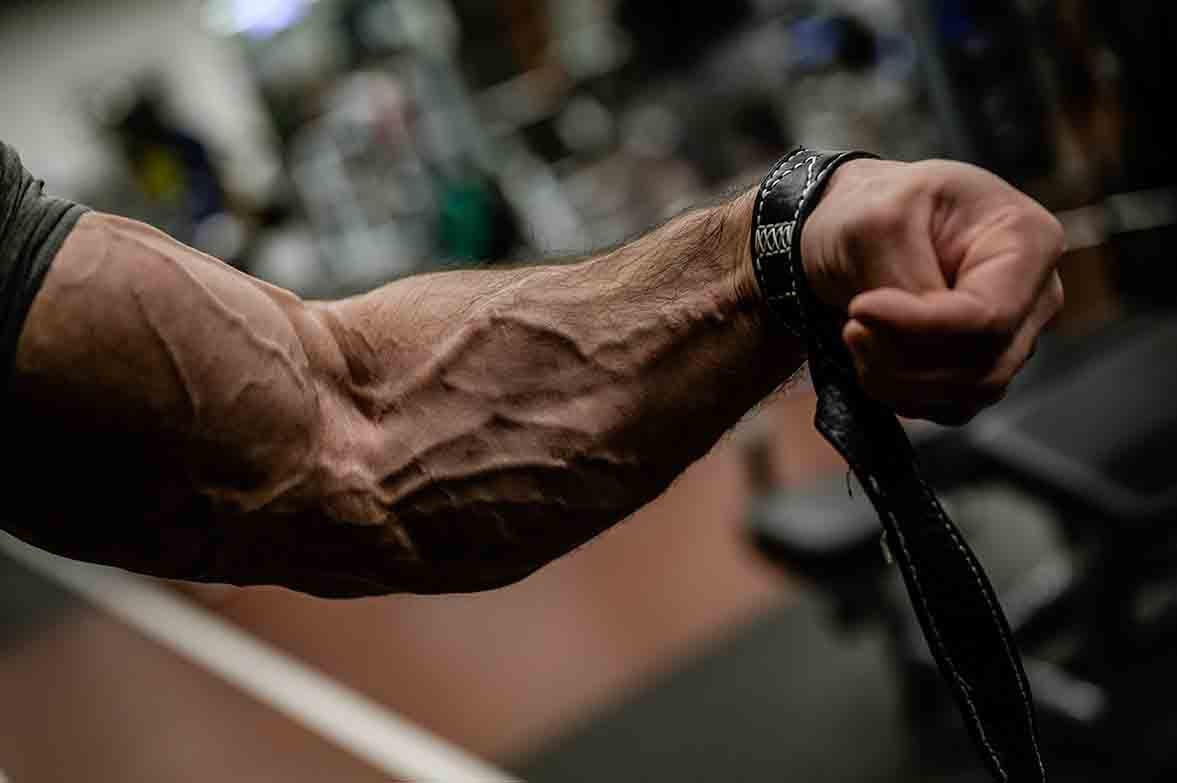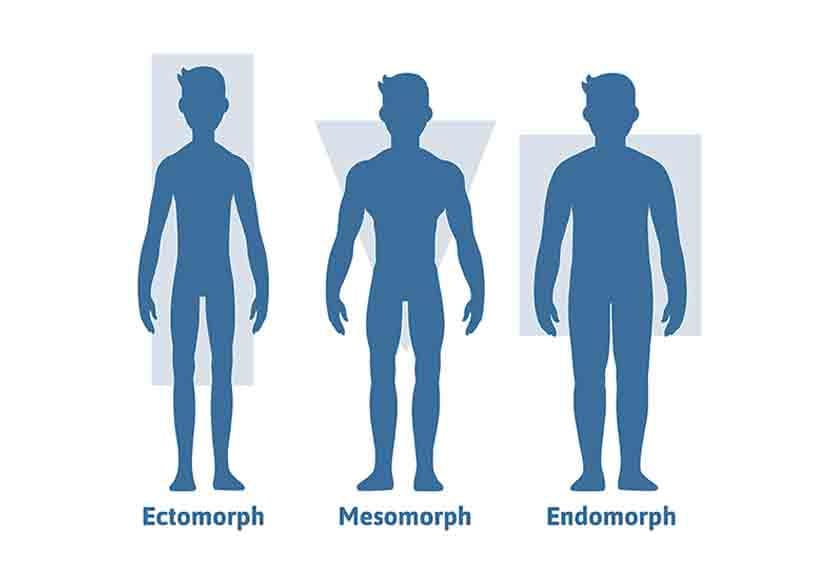Forearm Genetics: Tips and Tricks to Grow Forearms Quickly
Do you know what is good vs bad forearm genetics? Discover the forearm exercises and how you can grow stubborn forearms even with bad genes..
If you’re trying to grow your forearms, you may be wondering about what genetic limitations you face in developing your arm muscles. Have you heard about good and bad forearm genetics?
This article will give you an in-depth look at good vs. bad forearm genetics and how they can impact your ability to grow your forearms.
Then, we’ll help you understand forearm muscle anatomy, including what components may be genetic and which ones you can train. Plus, we’ll highlight a few strategies you can use to grow bigger forearms if you struggle with genetic limitations.
Good vs Bad Forearm Genetics
What are good and bad forearm genetics? Generally, what’s considered “good forearm genetics” to one may be “bad” to someone else.
Therefore, there’s no right or wrong answer when it comes to your genes. If you value a lithe and lean physique, slimmer forearms with low body fat may appeal to you.
Anyhow, there are a few common classifications that people use for “good” vs. “bad” forearm genes.
Let’s review them here.
Signs of Good Forearm Genetics
- Low muscle insertions: This condition means that your muscle has less tendon. Therefore, the bellies of your muscles look longer. High insertions, on the other hand, have more tendon length and less muscle belly. This can lead to muscles that look shorter but have higher peaks.
- Long muscle bellies: These create a fuller look to your muscles.
- Forearm strength: If you have a good ability to grip or perform forearm workouts like the forearm plank or wrist curl, you likely have good overall forearm strength. This can be partly due to your genetic strength capacity and ability to build muscle.
Signs of Bad Forearm Senetics
- High muscle insertions: This means longer tendons and shorter muscles. This can lead to a less filled-out look for your forearms.
- Short muscle bellies: Although short muscle bellies can have higher peaks, creating more circumference to your forearms, they may not look as filled out or even as muscles with longer bellies.
- Weak forearms: Weak grip strength or forearm strength can be a sign of bad forearm genetics.
Alternatively, if you’re going through a lean bulk or dirty bulk to get a more fleshed-out frame, meatier forearms may be more your style.
If you’re doing aesthetic workouts in hopes of getting your body to look more appealing, there are a few different goals you may have in mind.
Men commonly like the look of broad and strong forearms. Larger forearms can look more masculine and help with things like push strength and grip strength, in terms of functional movement.
Forearm Workout Guide
In most cases, following a correct workout focused on your forearm can help you fix bad forearm genetics. Here are 3 workout groups for forearm exercises.
Workout 1
- Farmer's Walk: 3 sets X 60 seconds per set
- Plate Pinches: 3 sets X 30 seconds per set
- Wrist Roller: 3 sets X 1 up-and-down movement per set
This workout will help you train your grip strength specifically. This is one of the key reasons athletes hope for stronger forearms. Good grip strength is essential for many types of sports and can help you perform simple everyday tasks with more ease.
Workout 2
- Reverse Wrist Curls: 4 sets X 12-15 reps
- Wrist Curls: 4 sets X 12-15 reps
- Hammer Curls: 3 sets X 10-12 reps
Curls are a great way to hit the forearm extensor muscles. These small muscles help you extend your forearms at the wrist and through the fingers.
Workout 3
- Reverse Curls: 3 sets X 10-12 reps
- Towel Hang: 3 sets X 45 seconds per set
- Zottman Curls: 3 sets X 8-10 reps
This workout group combines both extensor work and grip strength training. Try these workout programs individually or feel free to mix and match exercises. Aim for around 3 forearm exercises per workout and you should be headed on your path to growth.
Wondering how many exercises you should do for specific body parts?
To learn more, read this article as a starter: How Many Chest Exercises Per Workout.
Are Forearms Hard to Grow?
Forearms can be harder to grow than other muscles in your body.
To understand the challenges in growing your forearms compared to other muscle groups, we need to understand the concepts of fast- and slow-twitch muscle fibers.
Forearms are slow-twitch fiber dominant. This can make them more challenging to grow for some weightlifters compared to fast-twitch fibers.
Forearm Muscles Anatomy
A quick note on anatomy. Despite their size, your forearms have over 20 muscles!

This is because function-wise the forearms do a lot. They work to move your elbows, forearms, wrists, and fingers.
Forearm flexor muscles work to flex your hand at the wrist. The forearm extensors, on the other hand, help extend your fingers outward. Just the flexors include the:
- Pronator teres
- Flexor carpi radialis longus
- Palmaris longus
- Flexor carpi ulnaris
- Flexor digitorum superficialis
These are only superficial forearm muscles, nearer to the surface of your skin, and don’t include the deeper forearm muscles.
Are 13-Inch Forearms Big?
13-inch forearms are above the average size. On average a man’s forearms are 11-12 inches in diameter.
A 13-inch forearm would be slightly larger than average for a man. For a woman, the average forearm circumference is around 10.5 inches.
In this case, 13 inches would indicate very well-developed forearms that are larger than average.
Are Big Forearms Healthy?
If you don’t have too much body fat, big forearms can certainly be healthy! They can also be an attractive feature. Women, especially, often tend to be attracted to men with thicker forearms and forearm or bicep veins.

Muscular forearms can be a sign of good health. On the flip side, your forearms can look big because the rest of your body is.
Excess fat isn’t healthy for most people, especially when it builds up around areas like your gut. Too much dangerous belly fat, aka “visceral adiposity,” is associated with heart conditions and metabolic conditions.
Are Skinny Forearms Genetics?
Your forearm size can be dependent on your genes as well as how you train them.
Taller, lankier people are sometimes more genetically predisposed to have skinny forearms. This body type is generally what’s known as the ectomorph body type, known for being long and lean with less ability to put on muscle mass or volume.
This term stems from a theory called “somatotypes.”

The other two types are mesomorph, people with a high amount of muscle mass vs. fat who tend to build muscle quickly and endomorph, those who are predisposed to rounder bodies with excess body fat.
William Herbert Sheldon developed the theory of somatotypes in the 1940s. The idea was that these basic body types were largely unchangeable and came along with certain personality characteristics.
This idea of corresponding personality traits with somatotype has been debunked (although your personality is highly influenced by genetics) and we now know that your basic body type can change over time through training.
Most people actually fall between all three types and don’t line up perfectly within one category.
That being said, people who are ectomorphic and naturally have a harder time putting on muscle would be more genetically inclined towards skinny forearms.
Do Grippers Increase Forearm Size?
Do hand grippers work to grow forearms? Any exercise that stimulates your forearm muscles can help them grow!
If you’re consistent with your use of hand grippers, your forearms can certainly grow. There may be more functional ways to grow your forearms, however, that are more applicable to other areas of training.
These can serve you better in developing your overall strength and building your forearms up over time.
There are some exercises you can do that help you build muscle in other body parts like your biceps and back while also strengthening your forearms. These include:
- Reverse curls
- Dead hangs
- Wrist curls
How Can I Make My Forearms Stronger with Bad Forearm Genetics?
No matter your genes, there are a few easy ways you can get bigger forearms, even if your genes aren’t optimal. These include:
1. Weight Training
Working on targeted forearm exercises like wrist curls and reverse curls will help you build up your muscles over time.
With training, consistency and progressively overloading your weight is key. Lift a bit heavier each session or increase your number of reps and you should be able to help your forearms grow.
Varied Techniques: Incorporating different training techniques, such as high-rep, low-weight endurance exercises and low-rep, high-weight strength exercises, can help maximize development.
2. Eating Well
On your off time, getting enough protein in your diet is one of the best ways to help your muscles recover, repair and grow.
3. Recovery
Making sure to rest and stretch after a workout session will help you increase your potential for gains and lower your injury risk/
Using these strategies together is a great way to start building up your forearm muscles sustainably.
Takeaway
Although your genes are a major factor in helping your muscles to flourish— including your forearms— all these small adjustments and workarounds can help you get stellar arms even with the world’s worst forearm genetics.
Bad forearm genetics don’t have to mean bad workouts. The Flex App progresses as you do with plate tracking capabilities and auto progression. Get targeted workouts for strength, growth, and longevity.
References
Plotkin, D. L., Roberts, M. D., Haun, C. T., & Schoenfeld, B. J. (2021). Muscle Fiber Type Transitions with Exercise Training: Shifting Perspectives. Sports (Basel, Switzerland), 9(9), 127. https://doi.org/10.3390/sports9090127
Shuster, A., Patlas, M., Pinthus, J. H., & Mourtzakis, M. (2012). The clinical importance of visceral adiposity: a critical review of methods for visceral adipose tissue analysis. The British journal of radiology, 85(1009), 1–10. https://doi.org/10.1259/bjr/38447238
Yang, N., MacArthur, D. G., Gulbin, J. P., Hahn, A. G., Beggs, A. H., Easteal, S., & North, K. (2003). ACTN3 genotype is associated with human elite athletic performance. American journal of human genetics, 73(3), 627–631. https://doi.org/10.1086/377590
Related articles


Get fit with Flex
Build muscle & lose weight fast for free.
Available on iPhone + Apple Watch





